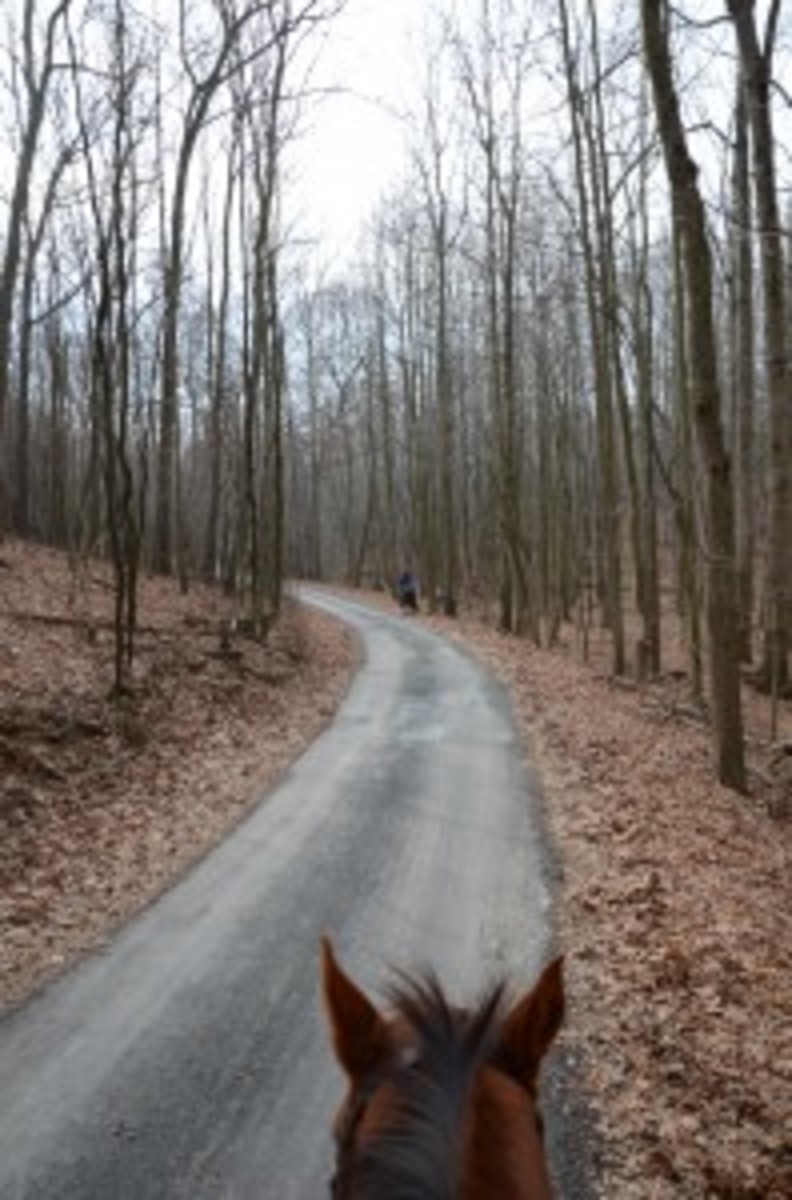Colic – What to Watch For:

- Pawing, kicking at belly, and/ or attempting to lie down.
- Excessive sweating (more than normal for the level of exercise, or while at rest).
- Teeth grinding; repeated curling of upper lip.
- Resting heart rate over 40 beats per minute (BPM); resting respiration rate over 20 breaths per minute. Note: For the purposes of this article, “resting” means about 30 minutes after stopping your trail journey.
Colic – What’s Happening:
Abdominal pain, resulting from gas accumulation in the intestine; feed impactation; or an intestinal twist or displacement.
Colic – What to Do:
Step 1: Check your horses’s vital signs; resting heart and respiratory rates; capillary refill time; and gut sounds. Note: A heart rate over 60 BPM, respiration rate over 30 breaths per minute, dark red/ purplish gums, and/ or lack of gut sounds indicate a moderate to severe colic–send your trail buddy to summon veterinary help.
Step 2: Administer a dose of Banamine. Note: Remember to tell your vet exactly what you’ve given your horse, because many drugs, including Banamine, mask symptoms. If, despite the Banamine, your horse’s pain causes him to roll, administer a dose of xylazine/butorphanol (prepared beforehand by your vet). This sedative may help control the pain for up to 30 minutes, but also will make moving your horse more difficult because he’ll be unsure on his feet, and unresponsive. Warning: Never administer Acepromazine to a colicky horse. This medication can cause a detrimental drop in blood pressure.
Step 3: Slowly lead your horse home, or back to your trailer. (When hauling, stop every 15 minutes to make sure he’s still on his feet.) Call your vet when you reach home. If your horse is unable to walk, immediately send your trail buddy to summon veterinary help.
Colic – Risk Factors:
Stress: A trail ride can be a stressful “lifestyle change” if your horse doesn’t leave home often. Both psychological and physical stress can lead to abnormal gut movement, which alters the passage of food and gas through the intestinal tract.
Diet change: Any sudden change in your horses’ at-home diet can negatively affect his gut. For instance, more than an hour’s grazing time, if he’s not been previously exposed to grass, can lead to excess gas production and abnormal gut movement.
Dehydration: If your horse doesn’t drink, he’ll become dehydrated, and his intestines will dry out, making it difficult for them to move food along in a normal manner.
Colic – Preventative Measures:
- Gradually acclimate your horse to life on the trail. Start by exposing him to short (under 1 hour), easy trail rides, gradually increasing duration/ difficulty over a period of weeks.
- Gradually introduce new feed the week before your trail ride. Let your horse graze for no more than 1 hour at first, then add 15 to 20 minutes of grazing time each day. Warning: If your horse colics after exposure to grass, limit his roughage to hay.
- Offer your horse water a minimum of every 2 to 3 hours. If he refuses to drink after 3 hours, you’d best head for home.
Barb Crabbe, DVM, is a contributing editor at Horse & Rider. She is an Oregon-based equine practitioner.
This article first appeared in the May 1994 issue of Horse & Rider.
Page 1, 2, 3, 4, 5, 6, 7, 8, 9






